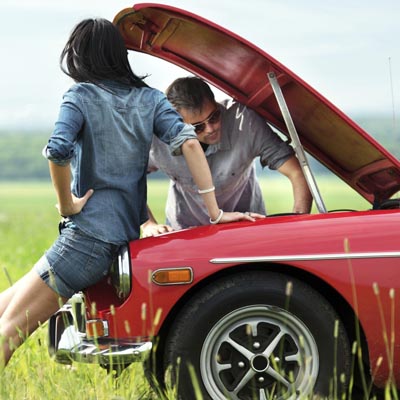
Getty images
I had my first fender bender last year during the holidays. It was dusk, I was tired, stressed and trying to find a parking spot at the toy store. I misjudged the distance between my car and another while parallel parking and – crunch – I hit another parked car. While no one was hurt I realized one major thing: I had no clear idea what to do next.
Should I leave my car where it was? Call the police? In the shock of the moment, I wasn’t entirely sure. Apparently, I’m not alone. According to a report by TD Insurance, only 31 percent of Canadians know how to deal with a car accident safely and efficiently. So what’s the right way to handle an accident?
Step 1: Keep calm
Don’t panic and above all, when you’re speaking to the other party involved, don’t accept any money or admit fault for the collision. And don’t agree to just forget about it. Doing this can affect how much coverage your insurance company will give you.
Step 2: Safety first
Make sure everyone involved is safe and, if you’re able to do so, move your vehicle out of the flow of traffic to avoid any additional damage.
Step 3: Call the police
This is your first step if someone is injured or there is major damage to your car, call the police (especially if you think a criminal act was involved). But even it it’s a minor scrape-up, you might still want to call police – at the very least they’ll point you to your local collision reporting centre.
Step 4: Take notes
Write down details of the accident, identify vehicles and people involved and note any witnesses or emergency personnel on the scene. Take pictures or video if possible and even draw a diagram of the accident scene to help out with the claim.
Step 5: Call your insurance company
28 percent of drivers think they need to report an accident to their insurance provider only if their car has experienced major damage. But most policies, says TD, require you to report any accident involving loss of damage to people or property. If you don’t report it, it might affect your coverage down the road. This is especially true if the other driver reports the accident: their insurance company could contact your insurer who could then cancel or refuse to renew your policy.
Reminder: Keep a checklist in your car and keep an emergency kit handy
Make a list of things to do after a collision and keep it in your glove compartment in case you end up in an accident. You should always have some essential items in your car in case of an emergency: a flashlight with extra batteries, a first aid kit, and road flares.
Money expert Caroline Cakebread has been writing for Chatelaine.com since 2006. She is a recovering academic and the mother of two small kids. She lives in Toronto where she writes and reads about all things financial. Follow Caroline at Twitter.com/ccakebread.
The post How to handle a fender bender: Five critical steps appeared first on Chatelaine.